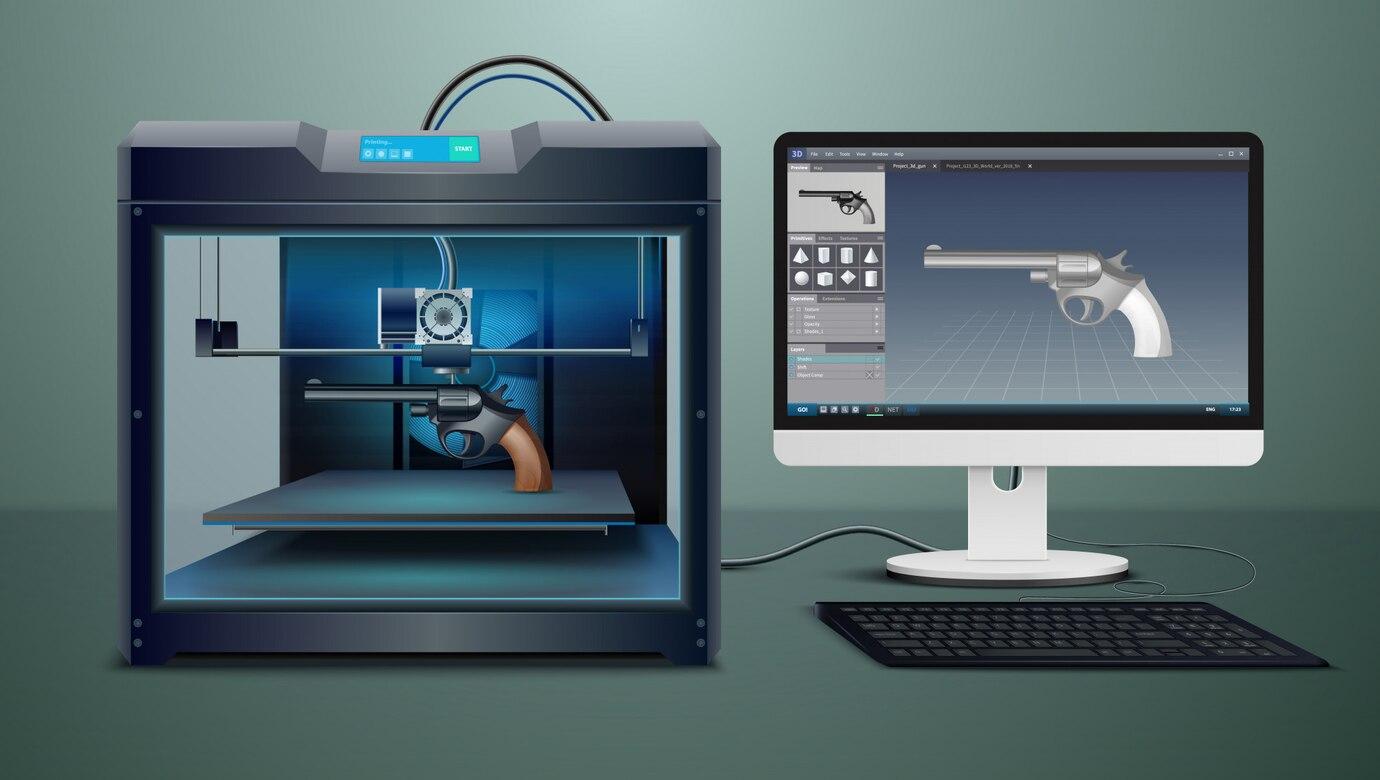The desktop 3D printer market has evolved far beyond its roots in hobbyist and maker communities. Today, it's an increasingly sophisticated ecosystem shaped by technological innovation, niche market penetration, supply chain shifts, and behavioral changes in both consumer and professional segments. Beneath the surface of typical growth forecasts and adoption statistics lie several under-the-radar dynamics worth watching.
1. Rise of Hyper-Specialized Use Cases
While general-purpose desktop 3D printers still dominate the market in volume, there's growing demand for hyper-specialized desktop printers tailored to unique applications. Examples include low-temperature printers for chocolate printing in gourmet industries, biocompatible resin printers for dental prosthetics, and high-precision FDM machines for PCB prototyping. This niche-driven segmentation is pushing manufacturers to abandon the one-size-fits-all approach, resulting in highly modular and customizable printer platforms.
2. Open-Source Hardware Meets Professional Demand
Open-source 3D printer frameworks (e.g., RepRap derivatives) once targeted DIYers, but they've now evolved into serious alternatives to commercial units. Companies like Prusa Research have bridged the gap by blending open-source flexibility with professional-grade reliability. These platforms are increasingly attractive to research institutions and startups that need full control over hardware and firmware. This is reshaping buyer personas and creating demand for community-supported yet highly functional machines.
3. The Supply Chain Reset: Micro-Factory Integration
Post-COVID global disruptions have led many small manufacturers to rethink local production models, and desktop 3D printers are a key enabler. What’s quietly happening is the emergence of “micro-factories”—compact, distributed manufacturing cells built around desktop printers. These setups are not only reducing lead times and shipping costs but also giving rise to hyperlocal production networks in industries like fashion, automotive accessories, and consumer electronics.
4. Integration of AI for Print Optimization
AI is becoming embedded in slicing software and firmware, enabling self-correcting print processes and real-time parameter optimization. Companies like UltiMaker and Bambu Lab are leading this charge. Beyond mere automation, AI is allowing for dynamic response to nozzle clogs, temperature inconsistencies, or layer adhesion issues, which reduces failure rates dramatically. This intelligence is also trickling into predictive maintenance, potentially revolutionizing how users interact with their machines.
5. Education as a Strategic Market Driver
While educational use of 3D printers isn't new, the scale and curriculum integration are deepening. Countries like India and Brazil are pushing nationwide STEM programs that include 3D printing labs in schools. This is creating long-tail demand for affordable, rugged, and safe-to-use printers designed specifically for classrooms. This strategy is expected to seed entire generations of users, creating a future workforce already accustomed to additive manufacturing tools.
6. Regulatory and Material Safety Evolution
A largely underreported but significant dynamic is the emerging scrutiny of filament and resin safety, especially in indoor and educational environments. New health studies on ultrafine particle emissions and VOCs (volatile organic compounds) are pushing vendors to innovate on material formulation and closed-loop filtration systems. Expect eco-resins, biodegradable filaments, and HEPA-integrated enclosures to become not just selling points, but compliance requirements.
7. Subscription-Based Business Models
A subtle but growing trend is the emergence of SaaS-like business models for desktop 3D printing. Companies are offering hardware at reduced costs in exchange for ongoing revenue from software licenses, material subscriptions, and cloud printing services. This model lowers the barrier to entry and creates predictable revenue streams for vendors, while offering users a plug-and-play experience—especially attractive for SMEs that don’t have time to tweak hardware.
8. Cultural and Regional Preferences
The market is also being shaped by regional user behavior and cultural factors. For example, in Japan, space efficiency and noise control are top concerns, leading to demand for ultra-compact, near-silent units. In contrast, in Germany and Northern Europe, precision and material compatibility dominate purchase criteria. Understanding these cultural nuances is becoming critical for vendors expanding globally.
9. Blockchain and Print Authentication
Counterfeit parts and IP theft have become concerns in professional 3D printing. A novel response to this is the integration of blockchain for print authentication. Certain desktop printers now offer secure digital signatures embedded in G-code, ensuring that only authorized files can be printed. This is especially important in sectors like aerospace prototyping and medical device development, where IP protection is paramount.
10. Secondary Market and Circular Economy Push
As more institutions and makers upgrade their machines, a secondary market for refurbished 3D printers is forming. At the same time, eco-conscious consumers are driving demand for recyclable components and cradle-to-cradle printer designs. Some manufacturers are responding with take-back programs and modular designs that allow for easy component replacement rather than full system disposal.
Conclusion
The desktop 3D printer market is a landscape of quiet revolutions. Far from being static or saturated, it's being actively reshaped by specialized demand, AI-driven automation, educational initiatives, regulatory pressure, and innovative business models. The future of this space is not just faster, better, or cheaper—it’s smarter, safer, and more connected.







